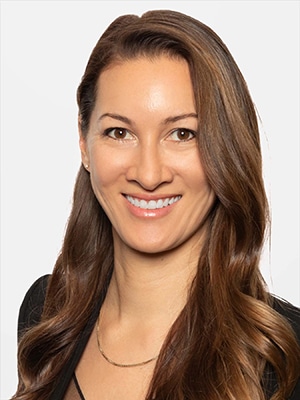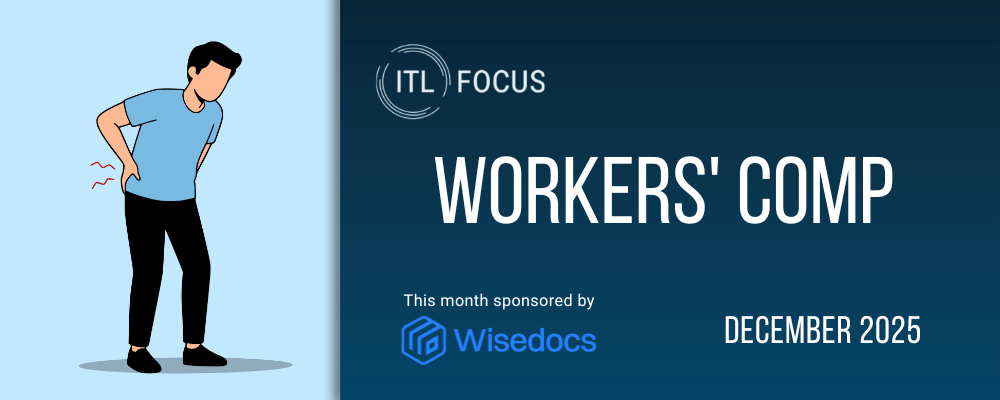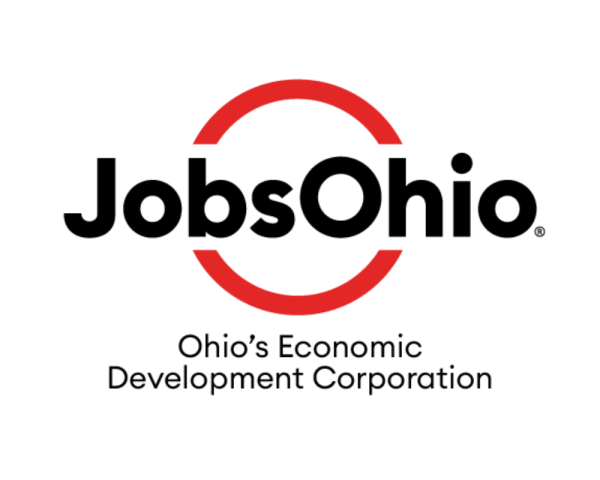 | Alex is the chief people officer at Sidecar Health, responsible for growing the team and crafting a culture that will fuel its team to achieve its ambitious mission. She has spent her career building companies across a variety of industries and in various roles, from strategy and business operations to people and places. She has led the development of the people function from the ground up at several fast-growing startups, shaping them into award-winning workplaces. She was most recently head of people at Ike (now Nuro), a company developing automation technology to transform the trucking industry. Prior to that, she was the VP of people and culture at Glint (now part of LinkedIn), an industry-leading HR SaaS platform. Alex has a master’s in research and evaluation and a bachelor’s in anthropology from the University of California, Los Angeles. She’s an avid traveler and backpacker, and if she could travel anywhere, it would be back in time to watch Jerry perform with the Dead. |
 | Sherry Chan is the chief strategy officer for Atidot, a Series B funded insurtech startup that uses AI to create opportunities for life insurance companies across the value chain. Sherry has over 20 years of actuarial experience, having served as chief actuary for the city of New York and the state of Ohio. As New York City’s chief actuary, she provided technical expertise to the city’s five retirement systems and pension funds, with approximately 800,000 participants and nearly $275 billion of assets, certified the $10 billion annual required pension contributions and oversaw a city agency with a professional staff that has decades of experience in and out of city service. She is a board member of the Society of Actuaries. Sherry obtained both her bachelor of science in actuarial science and mathematics and her executive MBA from Ohio State University. She established the university’s first actuarial endowment, the Sherry S. Chan Actuarial Endowment, and is a member of their College of Arts & Science Dean’s Advisory Committee. |
Insurance Thought Leadership
Let’s begin with health insurance.
For decades, we've all been reading about soaring healthcare costs and, thus, much higher insurance premiums, but an article this month in the Washington Post says that the increases in premiums have been declining and that premiums have actually risen more slowly than general inflation since 2020. Alex, as the chief people officer at Sidecar Health, are you seeing that sort of trend?
Alex Coonce
The sad truth is that even if the rate of increases is slowing, premiums continue to rise and the overall cost of care for most American families is already, or is very quickly becoming, unaffordable. The median family income in America is about $70,000, while the average family premium cost is north of $20,000. Spending nearly 30% of a family’s income on health insurance premiums is simply unsustainable. The math doesn’t work. Meanwhile, the three biggest health insurers in America took home nearly $900 billion in revenue in 2023, so the incentive structure is clearly unbalanced.
We’re proud that our annual premium increase averages 4% for all our employer groups, which our data shows is nearly three percentage points lower than traditional carriers in our markets. Not only do our premiums start on average 20% lower than traditional carriers, we’re also able to keep renewals low because our model is the first to truly align incentives and put patients in the driver’s seat of their care. When armed with choice, transparency and the power of cash to pay for care on the spot, our members make smart decisions, which result in lower total out-of-pocket costs.
Insurance Thought Leadership
We've also all read about employers increasing deductibles and generally trying to limit their exposure on the health insurance of their employees. Is that fair? What are other trends you're seeing in employer-based healthcare?
Alex Coonce
Unfortunately, “fair” is not a word often associated with today’s healthcare system. As costs continue to rise, employers are in the tricky position of having to balance business needs and their bottom line with increasingly unaffordable health plans for their employees. Ultimately, increased costs typically trickle down to employees in the form of higher premiums and deductibles.
Employers are getting creative to limit their exposure and reduce costs, from moving toward high-deductible plans, launching wellness programs, investing in telehealth and even building on-site clinics. Lately, we’ve seen more employers implement prescription drug management programs, using pharmacy benefit managers (PBMs), promoting the use of generic drugs and providing access to specialty medications through specific channels. Some employers are even adopting tiered network plans, where employees pay different levels of out-of-pocket costs depending on the healthcare provider they choose.
The reality is that all the tactics I mentioned are necessary on traditional health insurance plans. With the introduction of new models like Sidecar Health, employers realize the financial advantage immediately, while their employees benefit from both lower costs and unprecedented access to high-quality affordable care where they’re in full control of their decisions around who to see.
Insurance Thought Leadership
What are you seeing in terms of individual care?
Alex Coonce
What you see is people choosing to go uninsured. Nearly 28 million people in America don’t have health insurance, and that’s because it’s simply too expensive. What we learned in the individual market was that even if you pay for insurance, it doesn’t mean your insurance guarantees you access to affordable healthcare. Often, your insurance-negotiated rates, your copays and coinsurance are on average 30% more expensive than paying for care directly.
The Sidecar Health model has demonstrated some key learnings that can help shape the future of healthcare for all. For example, direct, cash pay models often result in lower prices. Also, putting incentives in place for consumers to make their healthcare decisions instead of financial institutions results in more informed care decisions and lower expenses.
Insurance Thought Leadership
Turning to life insurance:
Sherry, as chief strategy officer at Atidot, could you please explain a bit about how you use AI and what the benefits are, both for Atidot and for your customers on both sides-- the carriers and the policyholders?
Sherry Chan
Atidot employs both “traditional” AI and generative AI. The former is used to help predict policyholder behavior, such as what insurance product they may want, how much of it they want, when they may want it and how long they will want it for. GenAI is then used to process these insights into a usable format for the carriers.
For example, if our predictive models are showing there is a lack of demand or satisfaction by policyholders on a certain insurance product or feature, carriers can leverage our genAI offerings to acquire, engage or retain their policyholders. Our AI models have proven success in assisting policyholders in better understanding insurance and assisting carriers to provide better customer service, all while crafting a personalized journey that is more beneficial and efficient for all parties involved.
Insurance Thought Leadership
COVID sparked a surge in purchases of life insurance. Is that continuing, or are we regressing to the mean?
Sherry Chan
Life insurance is still being purchased; it’s just in a different format. During COVID, when death was a heightened concern and people were social distancing, life insurance purchases surged in the direct-to-consumer market. Due to folks’ urgency of wanting to secure a policy, term insurance’s cost relative to other insurance products, and its availability online, made it the popular go-to purchase. Now, we see a shift back toward fully underwritten products. People are more comfortable being back in person and no longer feel they need a policy immediately, which affords them the opportunity to be better educated about the various products and features, and prices are lower because people are willing to engage in the traditional, in-person underwriting process.
Insurance Thought Leadership
How can we continue to encourage people to narrow the protection gap?
Sherry Chan
Narrowing the protection gap can be approached from several angles. One, there needs to be better insurance education so individuals understand the benefits, the options and the process of securing a policy. Another approach is to provide incentives to agents to better service policyholders, balancing their engagement between new business and in-force business. Lastly, it’s also about helping carriers better understand their customers so they can nurture the relationship and provide a personalized experience throughout the value chain.
Insurance Thought Leadership
There has been a move away from the traditional approach to life insurance, requiring a medical exam and collection of fluids. As an actuary, how far do you think we can truncate that process while still underwriting accurately?
Sherry Chan
This heavily depends on data – i.e. how much data we can get and how accurate the data is. The more data we can get and the more accurate it is, the better we can train the models being built, making the results more and more reliable and cutting down the need for other processes. Additionally, data can also be available across time, as opposed to a specific point in time, which would allow us to deduce trends, paving the way for the underwriting process to be even more accurate and less dependent on traditional approaches. The possibility of instantaneous underwriting can be limitless with the growth and improvement of data!
Insurance Thought Leadership
Are there any other major trends that our readers should know about?
Sherry Chan
There are several trends taking shape that are causing products and markets to merge. First, there will be a great wealth transfer of $90 trillion in the next 20 years from the Silent Generation and Baby Boomers to the Millennials. With this transfer will come a demand for shifting insurance and retirement planning needs, merging these two industries closer together. Another trend we already are seeing is private equity firms’ purchase and entrance into the insurance market, which brings about a lot of changes. A third trend is the changing landscape in fiduciary regulations. Together, these trends will converge asset management with wealth management, so people will need to think more holistically in financial planning, with insurance being in the mix of it all.
Insurance Thought Leadership
What didn't I ask you about that I should have asked you about?
Sherry Chan
Through time, our economy’s engine has shifted from its dependency on our hands to a dependency on our heads and our hearts. Our country used to be largely manufacturing, leveraging our hands to work. Then our country shifted toward more white-collar jobs where we use our heads to work. Looking ahead, we will need to depend on our hearts more to work. We are already seeing this movement where empathy is seen as a leadership trait, where brands are canceled if they don’t align with certain passions and where marketing for companies like cell phone providers, airlines and insurance carriers are focused on selling the feeling and security of connecting you with loved ones or protecting the people and things that matter most to you. Other examples of our economy operating off our hearts are present in social media “likes” and even in the newest versions of genAI that many of us find mindblowing because they’re so emotive.
With this changing world, we’re all implored to think about how we will change, too.











